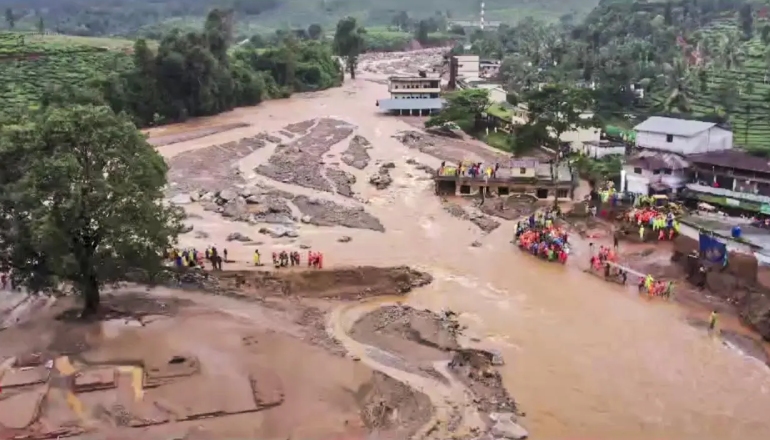Every time a climate incident happens in Kerala, it is natural for all of us to recall Mr Madhav Gadgil’s painful words, “Things are getting worse in Western Ghats. … and it won’t take decades but a few years before we see disasters if remedy measures are not taken.”
My aim is not to rub salt in the angry wound but to draw everyone’s attention to the ignorance or ‘We know it all attitude.” The imperatives at all levels, including individual, family, community, local body, policy, regulatory, and implementation, are being altered.
The disaster in Wayanad, Kerala, is a stark reminder of the urgent need for action and accountability in climate change mitigation. It is devastating to note the number of causalities increasing every hour.
For those of you not familiar with Mr Madhav Gadgil, he is an ecologist who submitted a detailed report warning the Ministry of Environment and Forests about the drastic impact of climate change on ecology and the resultant effect on humanity. His insights throw a harsh light on the reality being played out.
I am stating a few recommendations from the report:
- Designate the entire Western Ghats as an Ecologically Sensitive Area (ESA).
- Categorize 142 taluks in the Western Ghats boundary as Ecologically Sensitive Zones (ESZ) 1, 2 and 3, (ESZ-1 being high priority)
- Restrict all developmental activities (mining, thermal power plants, etc)
- Avoid building new dams based on large-scale storage in Ecologically Sensitive Zone 1
- A change in the present system of governance from top-down to bottom-up (right from gram sabhas)
- Decentralize governance and empower local authorities.
The Western Ghats, which run parallel to the nation’s west coast, are older than the Himalayan mountain range. This 1,600 km-long mountain range spans the states of Gujarat, Maharashtra, Goa, Karnataka, Tamil Nadu, and Kerala and is located about 30 to 50 kilometres inland. It encompasses an area of about 140,000 sq km.
While the state machinery is being oiled for rescue operations and assessing the damages, the biggest question that arises is –Development versus Environmental Protection and Climate Change.
I will break the four key elements down for easy undersatnding.
1) Climate change:
Meteorology scientists who have been vocal about the change in rain patterns have highlighted some key points after the Kerala Tragedy.
- This year, in particular, there was a greater intensity of rain in a shorter amount of time. For example, Wayand received 24 cm of rain in a few hours, Mumbai received 30 cm in five hours in July, and Delhi reported high-intensity rain leading to floods.
- More cloud burst alerts for August.
- Leh Airport, India’s highest commercial airport, faces difficulties in landing due to rising temperatures and thin air density, a clear example of climate change impacting aero engines’ speed.
- Landslides throughout the western ghats — For the past few years, landslides have been reported annually in the Konkan region of Maharashtra, disrupting rail operations. Another incident with reported casualties is the recent landslide in Shirur, Karnataka.
2) Development vs Disasters:
Experts agree that many disasters classified under the natural category are undoubtedly manmade. They are the result of unscientific development with scant regard to the impact on the environment. The flooding and landslides reported from various states in India have a direct correlation to the developments in the region. I am highlighting this point not as an anti-development stand but as a precaution to keep Mother Earth in focus while planning development before nature’s fury wipes us out.
Let the development not be reckless. Let it support our growth.
3) Energy needs: hydro projects
Conventionally, India, for its energy requirements, developed hydroelectric projects for two potential reasons: a) cost factor and b) fuel availability. However, it has now been proven that hydroelectric projects are more environmentally dangerous than their advantages.
4) Climate casualties
In 2023, when recorded climate casualties started climbing, we thought it might be just a one-off thing. However, with this year’s heat-related deaths, floods and landslides, the numbers from natural calamities are rapidly climbing. We are sitting on a Climate Time Bomb!
We have crossed all the danger marks. Climate action and accountability can only save mankind.

